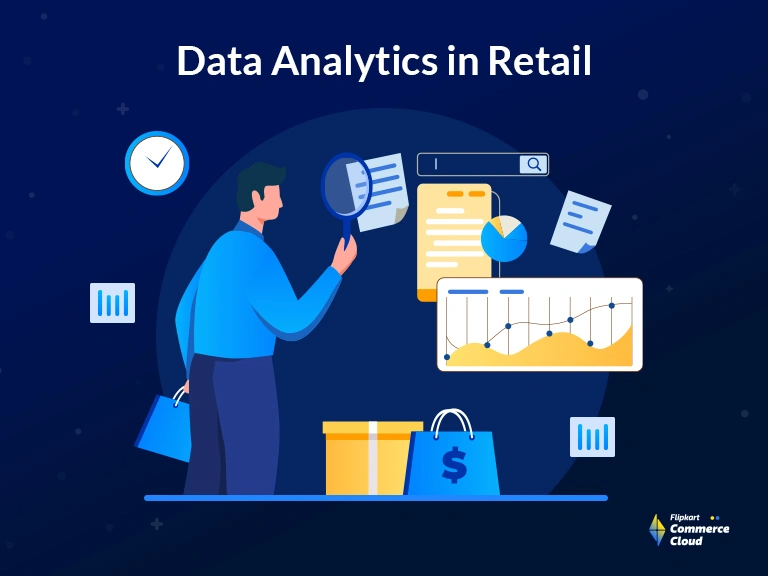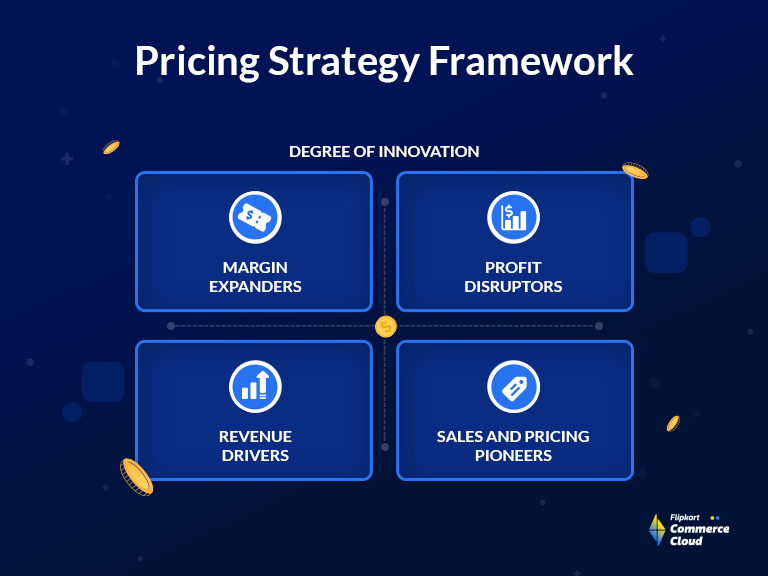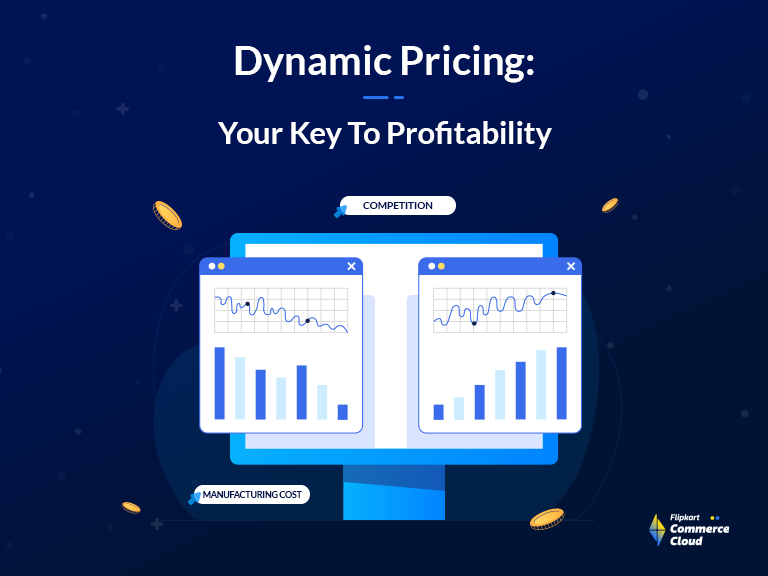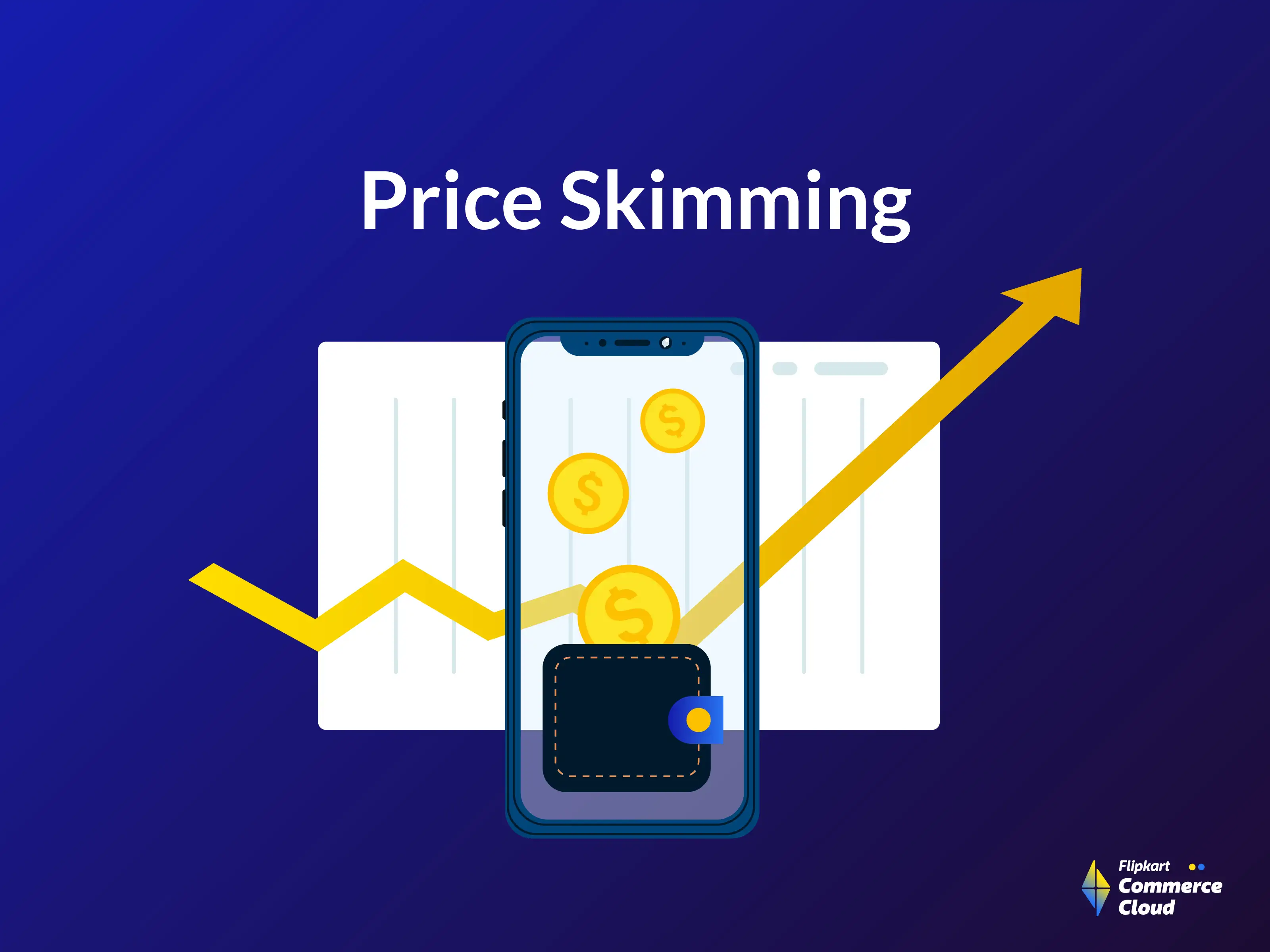It’s 2025, and the retail industry is at a crossroads. The aftermath of a worldwide pandemic and various social disruptions have greatly impacted the fundamental structure of retail business models and consumer habits. These sudden and extensive changes have forced retailers to adapt their approaches quickly to survive in an incredibly volatile and uncertain market.
Gone are the days when relying solely on traditional business intuition was enough. Data analytics has evolved from a mere buzzword to an important tool for boosting sales and profitability in the retail industry. The hurdles retailers face, such as declining foot traffic in brick-and-mortar stores and logistical challenges for online platforms highlight the importance of data-based business decisions.
In this blog, we will cover in detail how data analytics in retail is not just about crunching numbers; it’s about gaining a deep understanding of customer needs and preferences.
Understanding product affinity and market basket analysis
What is it, and why is it important
Retailers focus on ‘Product Affinity’ and ‘Market Basket Analysis’ data analysis techniques to gain better insights into consumer purchasing decisions. These methods dig into transactional data collection to uncover patterns and correlations between purchased products, providing invaluable information for retailers seeking to enhance sales strategies and understand consumer behavior in depth.
As consumer preferences continue to shift and change, the importance of using analytical tools to understand them has become even greater. While larger retailers were once the main users of these techniques, advancements in retail analytics have made them available to smaller and mid-sized retailers as well. This democratization has allowed these businesses to better compete with big-box stores by leveraging the power of data-driven insights.
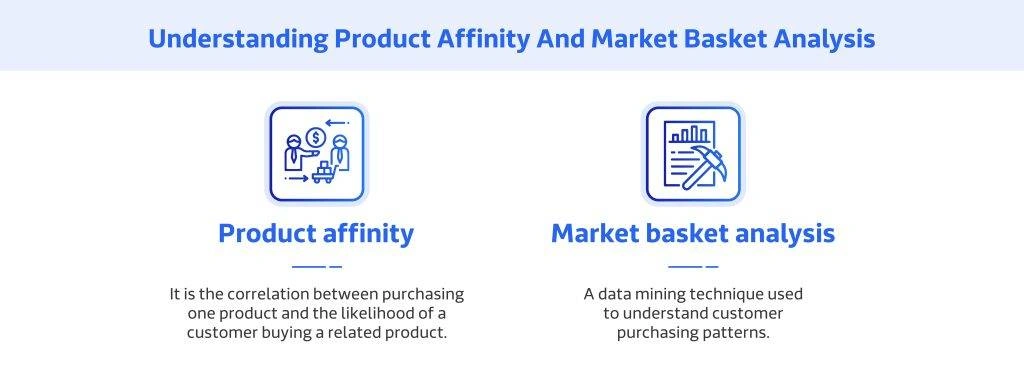
Benefits of Product Affinity and Market Basket Analysis in Retail:
Enhanced Personalized Marketing:
Armed with product connections and purchasing patterns, companies can precisely identify customers with comparable buying histories, allowing them to deliver tailor-made marketing messages. This precise strategy guarantees marketing campaigns are more impactful and successful, resulting in heightened customer involvement. For instance, a supermarket might observe that individuals who purchase gluten-free bread frequently also buy almond milk. In this case, the store can focus on customers purchasing gluten-free items with personalized advertisements or vouchers for almond milk, boosting the chances of cross-selling these products.
Improved Recommendation Systems for Cross-Selling:
Retailers can improve their recommendation systems by understanding the connections between different product groups. This will lead to more successful cross-selling opportunities. For example, an online retailer might notice that customers who buy fitness trackers also tend to purchase sports water bottles. Incorporating this insight into their recommendation algorithms, the retailer can suggest sports water bottles to customers browsing fitness trackers, leading to increased sales through effective cross-selling strategies.
Tips for retailers to successfully implement Product Affinity and Market Basket Analysis
- Focus on understanding customer segments by analyzing their purchasing habits, preferences, and demographics using data.
- Use machine learning to automatically identify patterns and connections in customer purchase data.
- Continuously experiment with various cross-selling and upselling strategies based on market basket analysis results, and adjust approaches based on performance.
- Educate your team on interpreting data analytics and integrating insights into merchandising, marketing, and sales strategies.
- Adhere to privacy laws and use secure methods for collecting and analyzing customer data to ensure privacy and data security.
Problems you might encounter and its solution
Data Fragmentation: Retailers frequently grapple with data spread across multiple systems, such as sales records, customer feedback, and inventory management, which often exist in isolation. Integrating these disparate data sources is essential for a comprehensive analysis.
Scalability Issues: The primary challenge in retail data analytics is the immense volume of data generated by various products, which poses significant obstacles to computing power and scalability. Factors such as individual product sales, customer reviews, inventory levels, and purchasing trends contribute to this massive accumulation of data. Each product can generate thousands of data points over time, resulting in a dataset that is too large and complex for traditional data processing tools like spreadsheets.
The real-time capture of Point of Sale (PoS) data also exacerbates these challenges, particularly during peak shopping seasons when the influx of data strains have already burdened systems. The necessity to process and analyze this data in real time or near-real-time to facilitate timely decision-making pushes existing computing systems to their limits, often leading to delays and inefficiencies in retail decision-making processes.
Delay in Decision-Making: Large organizations often experience delays in decision-making because of the heavy workload on Business Intelligence (BI) teams from multiple departments. These teams are responsible for analyzing a wide range of data sets and often have a backlog of requests, each requiring specialized attention. The complexity of integrating data and the need for thorough analysis and interpretation leads to a longer time between collecting data and obtaining actionable insights. Internal communication and approval processes in larger corporate structures further exacerbate this bottleneck. As a result, there is a widening gap between data analysis and decision-making, which affects the organization’s ability to adapt quickly to market changes or internal needs.
Solutions for Effective Product Affinity and Market Basket Analysis:
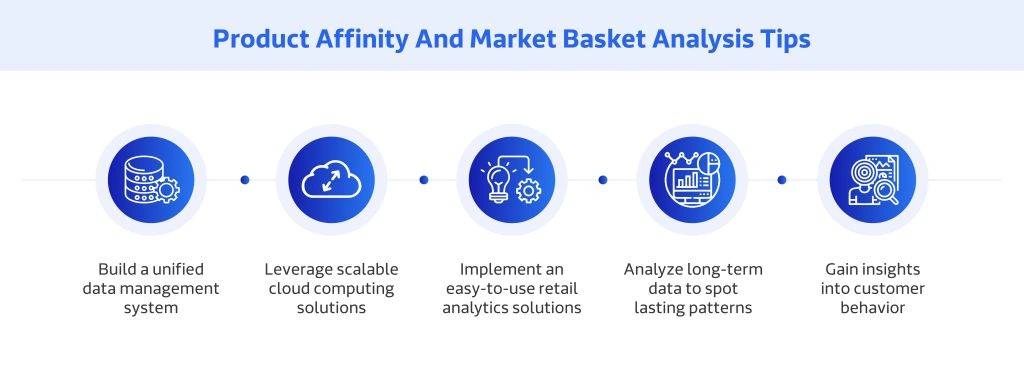
Create a Unified Data Management System: Set up a central data store, like a cloud-based data warehouse, to bring together all retail data. This method guarantees that all important data can be easily accessed and analyzed.
Utilize Scalable Cloud Computing Solutions: Move to cloud computing platforms that can handle different types of data quickly and flexibly. These platforms provide the ability to efficiently manage high volumes of data, ensuring uninterrupted data analysis.
User-Friendly Analytics Software: Provide retail staff with easy-to-use retail analytics solutions that do not demand advanced technical skills. This accessibility to data analysis facilitates faster and more agile decision-making across different levels of the organization.
Analytical Perspectives: Besides focusing on short-term trends, retailers should examine long-term data to recognize lasting patterns. For example, a gradual rise in the demand for sustainable and eco-friendly products over several years should influence long-range merchandising and marketing plans.
Dig into Customer Behavior Beyond Transactions: Delving into why customers leave their online shopping carts can offer valuable insights for enhancing the overall experience. Retailers can leverage this information to enhance their online user journey, from product exploration to the final purchase; potentially recouping a substantial portion of lost sales. It’s estimated that a staggering $260 billion in lost orders could be reclaimed through an improved checkout process and design alone.
Understanding product mix and placement
What is it, and why is it important
The range of products offered by a retailer, known as the product mix or assortment, includes various product lines and individual items. This goes beyond just the number of products and encompasses the different types, models, sizes, colors, and features. Product placement involves strategically positioning these products in both physical stores and online platforms. A well-curated product mix can meet a wide range of customer preferences and price points without overwhelming consumers with too many choices. For example, an online store that offers a diverse selection of smartphone models at different price points caters to various customer needs without causing decision fatigue.
Product placement is an important aspect of the product mix, as it helps increase product visibility and appeal. A brick-and-mortar store could mean strategically placing popular items at eye level or in high-traffic areas. On the internet, it involves creating web pages that showcase top-selling or carefully chosen products. For example, an online marketplace may feature bestsellers on its homepage or use algorithms to suggest products based on browsing history.
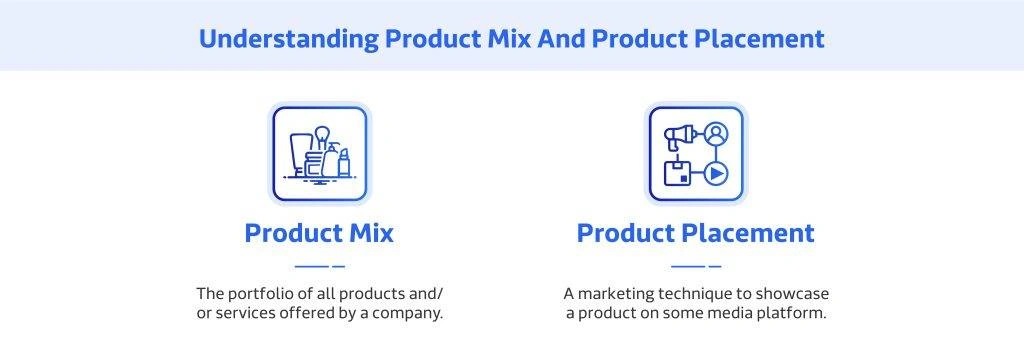
Importance of getting the optimal product mix and placement:
Brand Image and Customer Attraction: The products a retailer chooses to offer greatly impact its brand image and the customers it attracts. For example, a luxury store could damage prestige by selling too many low-end products, while a budget-friendly retail store might push away its core customers by stocking too many high-end items.
Enhancing Shopping Experience: In the age of online shopping, consumers want to find what they need quickly. Strategic product placement can help them avoid sifting through irrelevant options. For instance, categorizing products as Work from Home Essentials or Outdoor Adventure Gear can direct online shoppers straight to what they’re looking for.
Boosting Sales by Streamlining Choices: The struggle with too many options is a major issue in retail. In 2000, psychologists Sheena Iyengar and Mark Lepper conducted a study about consumer behavior at a local food market. They found that while a large display table with 24 different types of jam generated more interest, people were actually less likely to purchase any jam from this display compared to when there were only 6 types of jam available. Having fewer choices resulted in more purchases, proving that a carefully selected product range can be more appealing than an overwhelming selection. Retailers should streamline product display and avoid choice overload, where having too many options can actually paralyze consumers and lead to fewer purchases.
Staying Ahead of Consumer Trends: Retailers must constantly adjust their product offerings and display strategies to keep up with changing consumer preferences. This involves understanding seasonal needs, shifts in lifestyle (such as the increase in remote work), and new product developments.
To implement a successful product mix and placement strategy, retailers should:
Retailers need to understand customer data well. Knowing what customers like and how they shop helps create a product mix that appeals to the target audience.
Embrace Technology: Data analysis and AI can help predict trends, personalize online displays, and optimize inventory based on real-time demand.
Regularly Evaluate: Continuously assessing the effectiveness of the product mix and placement ensures that the retailer can adapt to changing market dynamics.
Problems you might encounter and its solution
Misjudging Product Value Beyond Top Sellers: It is a common mistake in retail to assume that the most expensive or top-selling products are always the most profitable. Instead, retailers should consider various factors when evaluating products, such as profit margins, sales frequency, return rates, and customer loyalty. For instance, a high-end appliance may have lower sales and overall profitability compared to a moderately priced kitchen gadget that sells quickly and has low return rates. Failing to properly assess these factors can result in ineffective product selection and placement choices, impacting future sales.
Constraints of Standard BI Dashboards in Retail Analysis: Many traditional Business Intelligence (BI) tools don’t provide detailed insights for making effective product mix and placement decisions. They usually only give a general overview and lack specific information for analyzing individual stock-keeping units (SKUs), customer behavior patterns, and sales variations in different regions. This can make it difficult for retailers to gain actionable insights at a micro-level, such as determining which particular clothing line models are more popular in specific areas.
Challenges in Managing Supply Chain Disruptions: When global events, such as pandemics or natural disasters, occur, supply chains can be greatly impacted. This can lead to challenges for retailers in terms of product availability and placement strategies. For instance, if there is a shortage of microchips that affects the supply of popular electronics, retailers must quickly adjust and promote alternative products to avoid gaps in their offerings. Failure to adapt to these disruptions can result in missed sales opportunities and dissatisfied customers.
Solution:
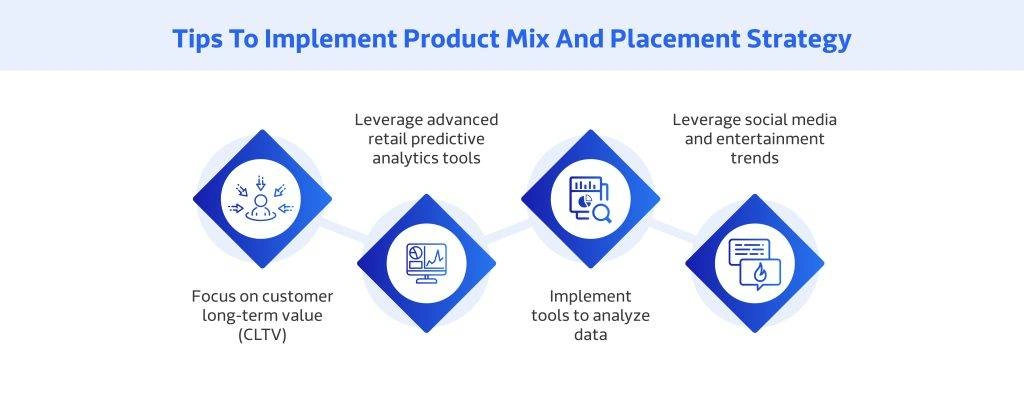
Emphasize the value of long-term customers (LTV): Identify which customer groups contribute the most to LTV and examine their buying habits. Retailers can utilize this information to customize their product selection and display to appeal to these valuable groups. For example, if analysis shows that families are a high LTV group, a store could enhance its focus on family-oriented products and showcase them more prominently.
Use advanced retail predictive analytics tools: Go beyond basic BI dashboards and incorporate cloud-based tools capable of conducting thorough, real-time data analysis. This empowers retailers to analyze intricate sales data at the SKU level, adapt to regional differences, and promptly respond to evolving market trends.
Power of Data Exploration Tools for Teams: Provide retail teams with the tools to independently analyze data and extract valuable insights. For instance, enable merchandisers to experiment with placing healthy snacks near fitness equipment to determine their impact on sales compared to placing them in the food aisle.
Leverage Cultural and Entertainment Trends: Keep a pulse on social media and entertainment trends to take advantage of their influence on consumer behavior. For instance, if a new gardening show gains popularity, retailers can boost the visibility of gardening tools and supplies in their stores and online platforms. The surge in sales of chess sets following ‘The Queen’s Gambit’s success on Netflix is a prime example.
Conduct Seasonal Analysis for Targeted Strategies: Explore targeted strategies through seasonal analysis to grasp shopping trends in various seasons and adjust product assortment and placement accordingly. This may involve prioritizing back-to-school supplies in late summer or highlighting winter sports gear during colder months.
Understanding recommendation optimizations
What is it, and why is it important
Recommendation optimizations involve consistently improving systems that provide customers with personalized product or service suggestions. These recommendations take into account factors such as previous purchases, browsing history, and demographic information. This tailored approach is crucial in modern e-commerce as it directly impacts customer conversion rates, engagement, and loyalty.

Why it matters:
Crafting Personalized Experiences: Recommendation engines utilize advanced algorithms to analyze customer data and anticipate their preferences, enhancing the relevance and appeal of shopping interactions. For instance, a fashion retailer may suggest accessories that complement a recently viewed item, enriching the browsing experience and boosting the chances of a purchase.
Boosting the Cart Size: Tailored recommendations prompt customers to discover new products, expanding their average purchase size. For instance, a bookstore suggesting a newly released book based on past purchases can increase the bottom line.
Promoting Customer Loyalty and Repeat Business: Tailored suggestions create a feeling of empathy and rapport with the customer, fostering loyalty. A patron with personalized reading suggestions from an internet bookshop is more inclined to make return visits, appreciating the individualized service.
Cultivating Brand Devotion and Support: When clients believe a brand consistently satisfies their requirements, they are likely to become devoted followers and even promoters. For instance, a customer who regularly receives pertinent recommendations from a home décor website will likely endorse it to their social circle.
Tips for Retailers to Optimize Recommendations:
Harnessing the power of cutting-edge analytics and artificial intelligence to enhance recommendation systems through data science and machine learning algorithms is the way to go. This method enables precise forecasting of customer preferences. Along with this, implementing A/B testing to consistently experiment with diverse recommendation strategies and identify the optimal approach for different customer groups is another effective strategy retailers can use.
For example, an e-commerce platform specializing in electronics could compare the effectiveness of personalized recommendations based on individual browsing history versus those based on similar customers’ behaviors.
Another method to secure optimized recommendations is to make sure to personalize across all customer touchpoints by integrating recommendation engines like websites, mobile apps, and email marketing. This will ensure a consistent and tailored customer experience.
Also, staying adaptable to market trends by adjusting recommendations based on current trends and seasons can boost this strategy. For example, a travel booking site can suggest destinations and packages according to emerging travel trends or seasonal preferences. Lastly, gathering customer feedback on recommendations and using this data to refine the algorithms can foster better results.
Problems you might encounter and its solution
Complex Customer Journey: Today’s customer journey involves multiple touchpoints. These can range from browsing online to in-store experiences, making it difficult to determine the most effective points to present product recommendations. Effectively engaging with customers at these crucial touchpoints with a customer base can be overwhelming for retailers.
Diverse and Voluminous Customer Data: With constant information from sources like PoS systems, loyalty programs, and online transactions, managing customer data can be overwhelming. This data is unique to each customer, creating a complex hub of data. To make sense of this massive amount of data, retailers must consolidate and distill millions of data points into actionable insights that can be time-consuming and demand extensive resources.
External Influences: External elements like weather, cultural events, holidays, and socio-political climate can have a significant impact on consumer choices and actions. These factors are tricky to anticipate and incorporate into recommendation algorithms. Retailers must invest time and resources to adapt to these external influences at the risk of providing inappropriate or irrelevant suggestions that may turn off customers.
Scaling Personalization: When dealing with thousands or even millions of customers, it becomes incredibly difficult to personalize recommendations on such a large scale. The main challenge is understanding each customer’s preferences and finding better ways to scale across a diverse and extensive customer base.
Solution
Implement a Customer 360 Framework: Integrate data from all customer touchpoints, including first-party data to comprehensively understand their journey for effective product recommendations based on each customer’s position in the buying process. For new customers with limited interaction history, general recommendations of popular or top-selling items can be helpful, while for loyal customers with extensive purchase histories, personalized recommendations based on their past behavior (such as recently viewed or purchased items) can lead to higher conversion rates.
Develop Detailed Customer Profiles: Implement a centralized data system to generate comprehensive customer profiles, incorporating their demographics, behaviors, and preferences. This segmentation will allow for more focused and personalized product suggestions. For example, customers within a specific age range or geographical location could receive customized recommendations based on the purchasing habits of similar demographic groups.
Integrate Third-party Data for Enhanced Insights: Integrate third-party data sources to enhance internal data and provide more nuanced recommendations. This includes using external datasets such as weather patterns or local events to give context-specific insights, allowing for timely and relevant product suggestions. For example, integrating real-time weather data can help showcase weather-appropriate products, like umbrellas in areas expecting rain.
Optimize Product Selection with Data Analytics in Retail: Regularly analyzing product performance is crucial for identifying any underperforming products, or “lemons,” that may be popular but not profitable. This includes looking beyond just sales volume and considering return rates and profitability. Adjusting recommendations to focus on high-margin products, particularly for high-value customers, can enhance overall profitability.
Balance Automation with Human Expertise: Integrating human expertise into automated recommendation engines adds a layer of sophistication to handle large-scale data. With human oversight, emerging trends can be identified, and recommendations can be adapted to reflect complex or rapidly changing market conditions. Empower your merchandising teams with tools to independently analyze data and modify recommendations in line with current business goals and customer expectations.
